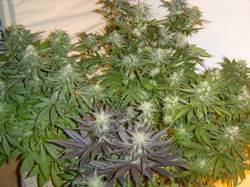N
Neptune
use the smell test.
follow your nose
follow your nose

secondascent said:I committed my whole garden to the 3lb reuse method...followed it as completely as i could (minus the diatomeceous earth) and in all honestly, my plants have never grown better....its comparable to growing in f.f. ocean forest soil.
Veg is very green and lush, fast growth, very little recovery time required after transplanting or cloning
Flo is nice growth, fattening of buds, no deficiencies or sign of ailments anywhere on the plants.
organics is a pre-requisite to growing herb in my opinion. ive never used non-organic methods but with this method cost is low, you save a bunch of soil...not to mention the time and work you save into replenishing and disposing non-reused soil and chems.
keep it organic!
VictoryGardener said:I'd just throw the entire pot of soil into the composter with some uncomposted green and brown matter.. the rootball will compost and give the dirt structure.. yea of course always moisten and microwave composted dirt.. although it is great for growing, it can carry some little nasties that need to be EXTERMINATED!
Pyrex said:After a season's use, my dirt gets dumped into one of many pots sitting out side of my house and spends a season growing nothing and just sitting and being washed out by rain. When I want to re-use it I just amend nutrient values and it's good. I do have to go around once a week or so and pull weeds out. Never any problems for and I do this with ALL my potted plant's soil not just my annuals - tropical's soil is cycled as well. Only time I buy soil is if I just don't have enough. Also, after it rains; if it occurs to me I will throw worms into the pots but i never run across them again so I can't say how much benefit they have but the point is i do very little to cycle soil.
Mate contains xanthines, which are alkaloids in the same family as caffeine, theophylline, and theobromine, well-known stimulants also found in coffee and chocolate. Mate also contains elements such as potassium, magnesium and manganese. Caffeine content varies between 0.3% and 1.7% of dry weight (compare this to 2.5–4.5% for tea leaves, and 1.5% for ground coffee).